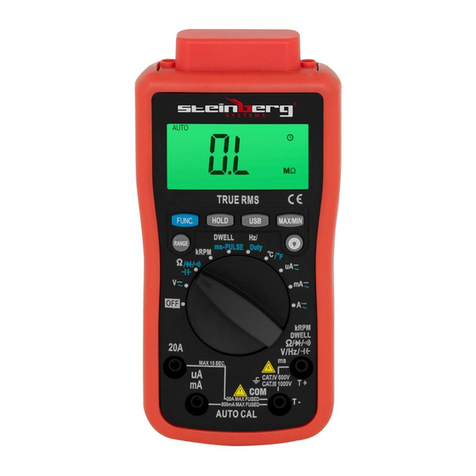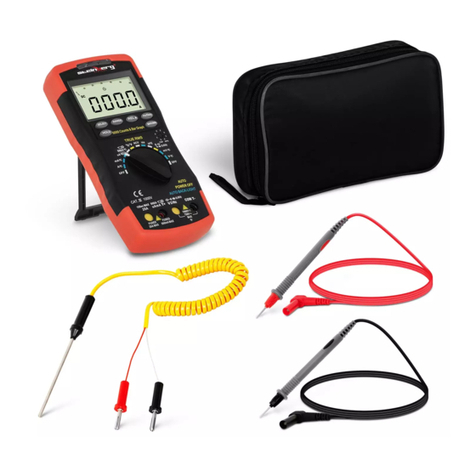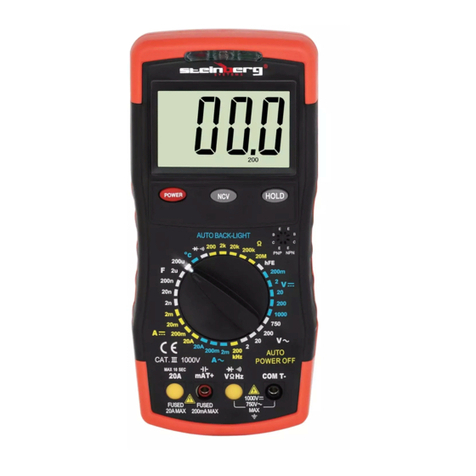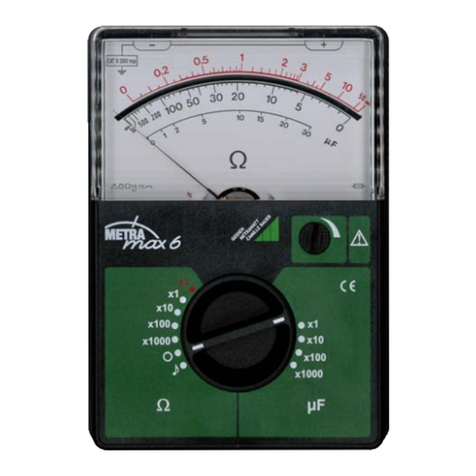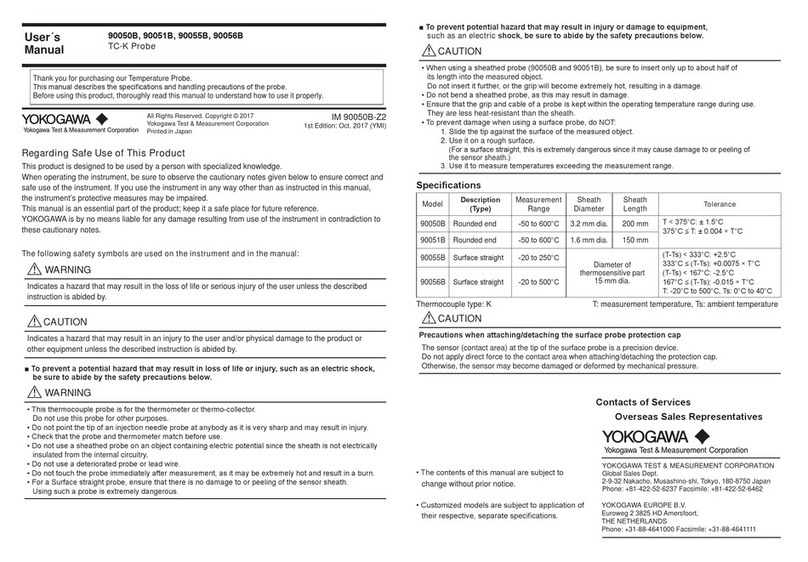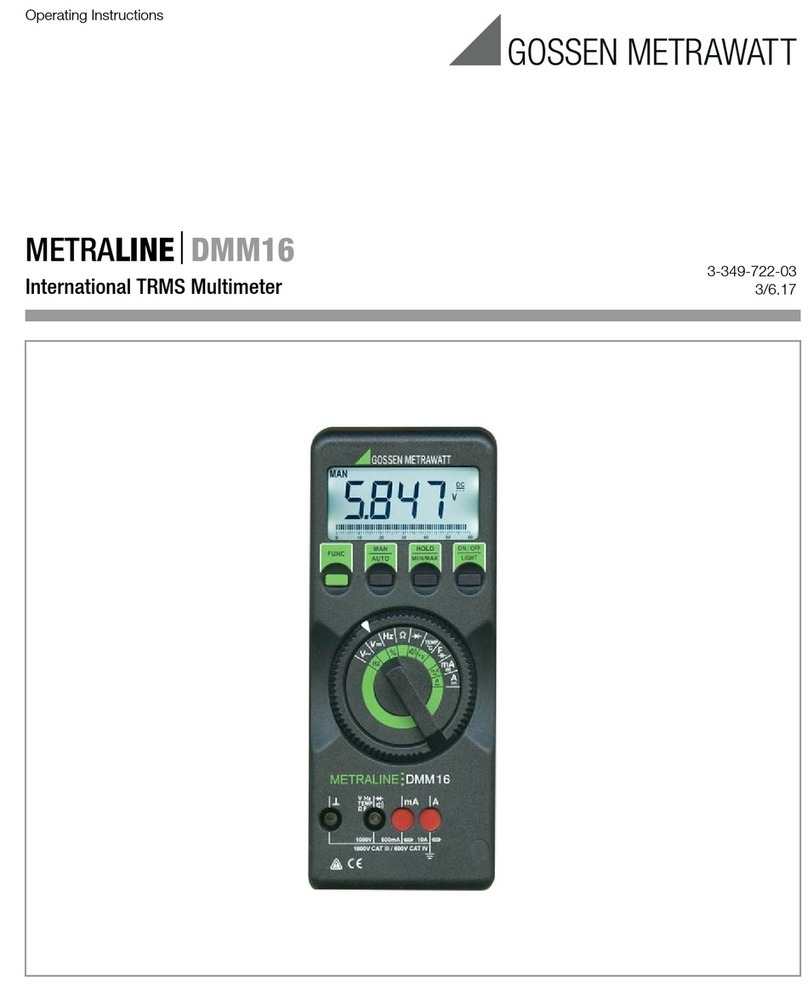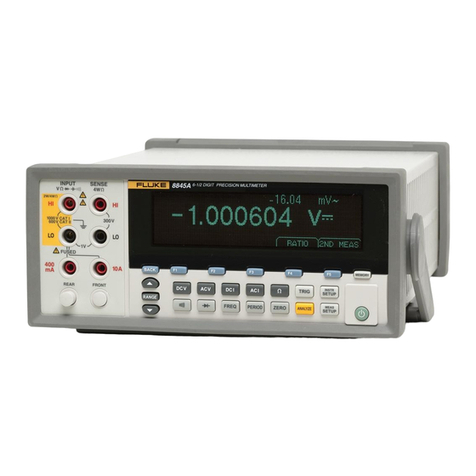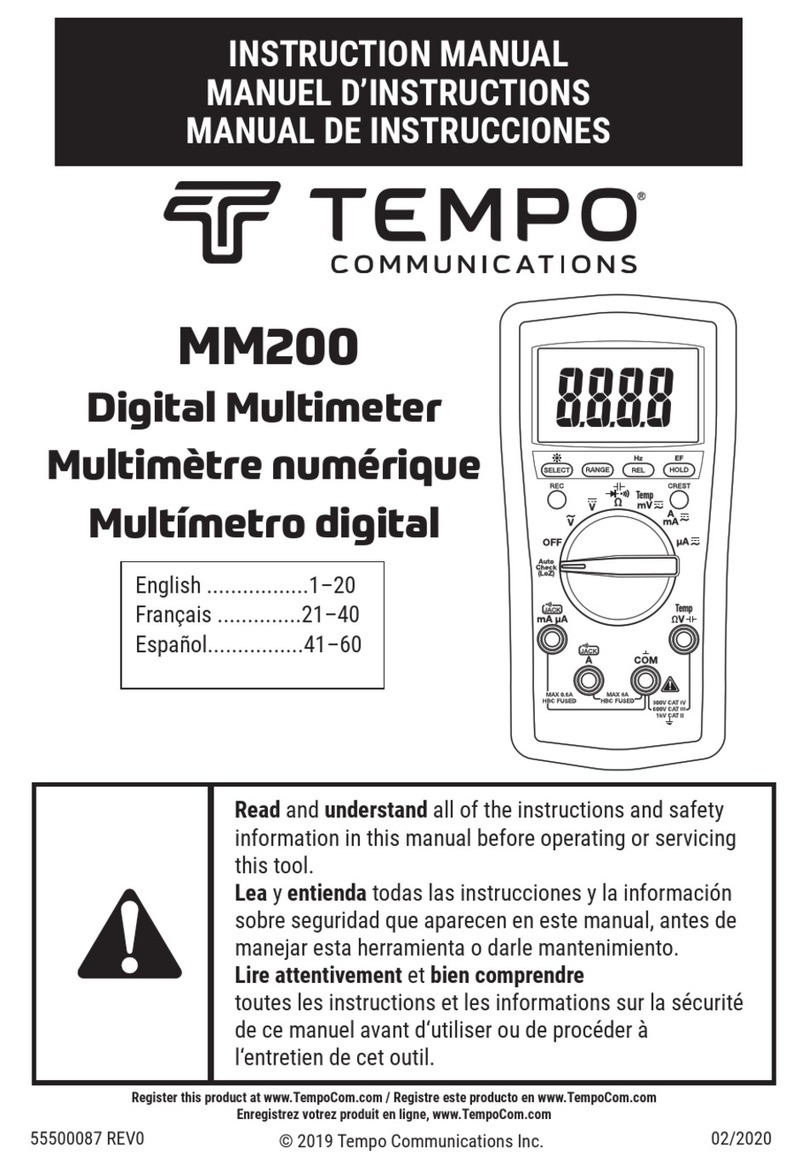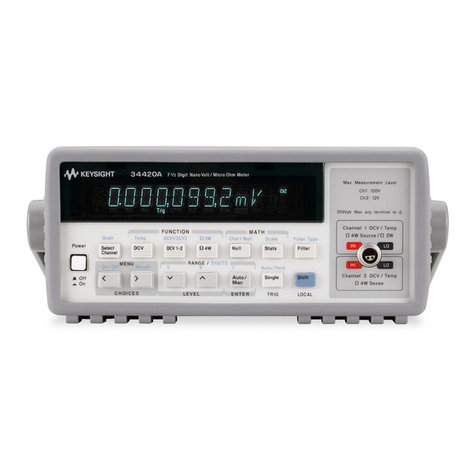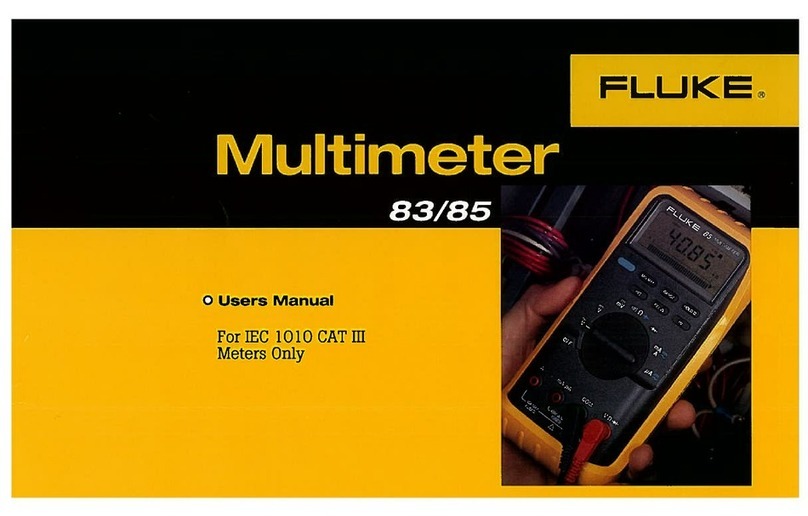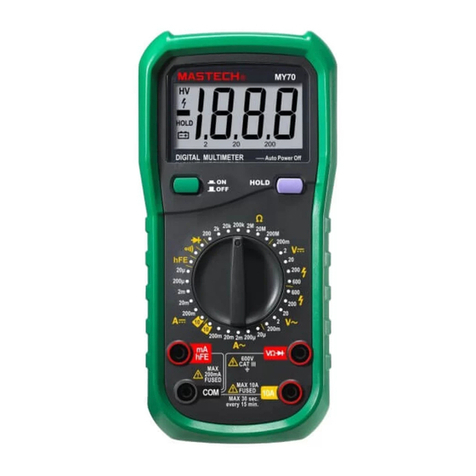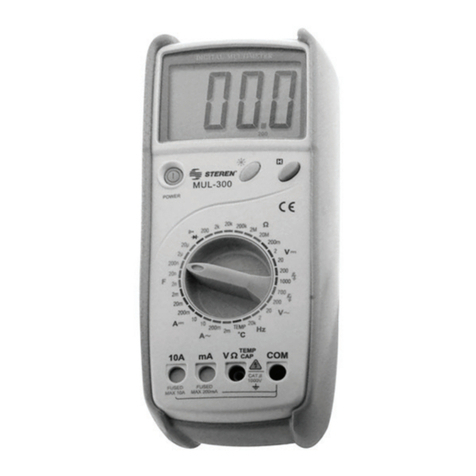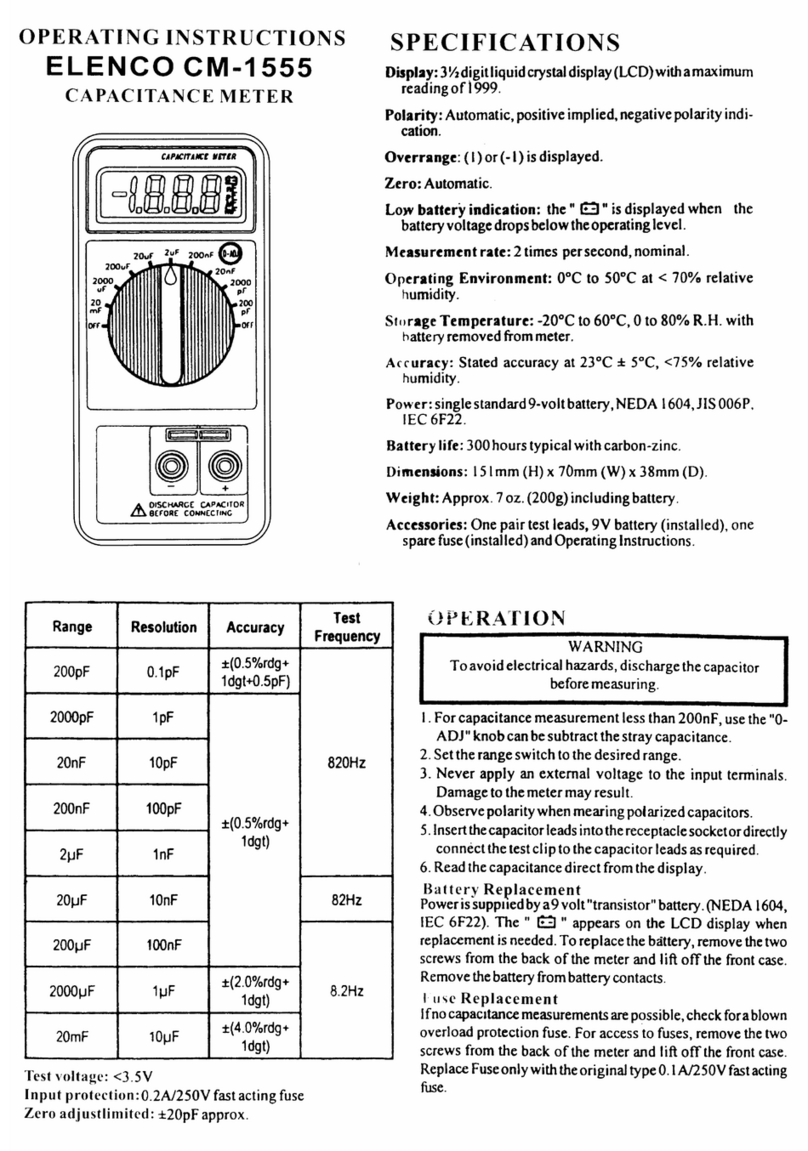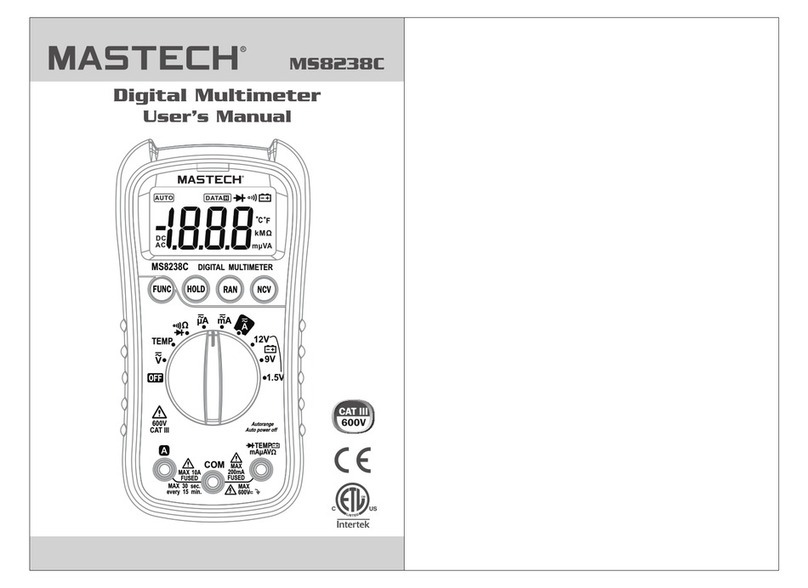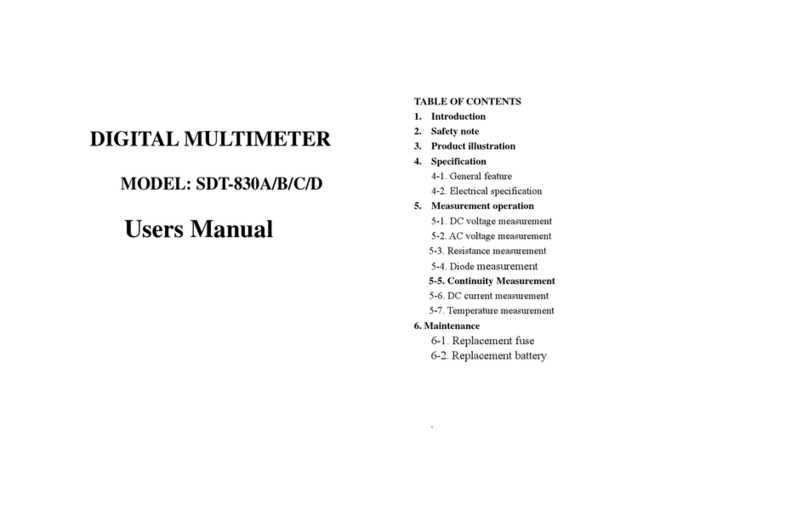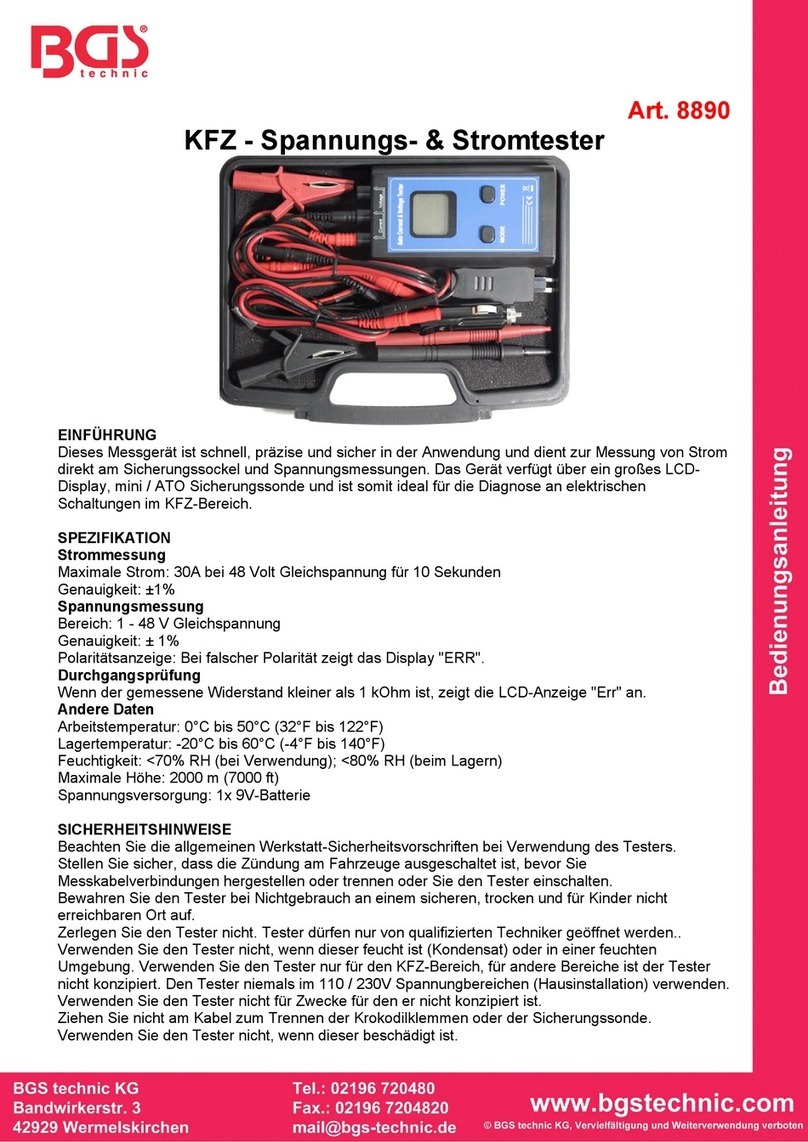
6 7
09.07.2019
3.3.1.8. RELATIVE MESSUNG
• Drücken Sie „REL“, um den relativen Wert zu messen.
Auf der Anzeige erscheint „REL“.
• Der automatische Bereichsmodus wechselt in den
manuellen Bereichsmodus. Drücken Sie erneut.
Zurück zum vorherigen Zustand. „REL“ erlischt,
aber Sie können nicht in den automatischen
Messbereichsmodus zurückkehren.
• Der relative Wert kann bei der „Hz “-Messung nicht
gemessen werden.
3.3.2. NUTZERANWEISUNGEN
• Eine Überschreitung des Anzeigebereichs hat zur
Folge, dass die Mitteilung „OL” angezeigt wird.
• Das Gerät schaltet sich automatisch nach 15 min Ruhe
aus. Die SEL-Taste drücken, um das automatische
Ausschalten des Geräts zu desaktivieren.
• Erscheint das „ “ Symbol, muss die Batterie
ausgetauscht werden.
3.4. REINIGUNG UND WARTUNG
a) Verwenden Sie zur Reinigung der Oberäche
ausschließlich Mittel ohne ätzende Inhaltsstoe.
b) Lassen Sie nach jeder Reinigung alle Teile gut
trocknen, bevor das Gerät erneut verwendet wird.
c) Bewahren Sie das Gerät an einem trockenen, kühlen,
vor Feuchtigkeit und direkter Sonneneinstrahlung
geschütztem Ort auf.
d) Es ist verboten, das Gerät mit einem Wasserstrahl zu
besprühen oder in Wasser zu tauchen.
e) In Hinblick auf technische Ezienz und zur
Vorbeugung vor Schäden sollte das Gerät regelmäßig
überprüft werden.
f) Benutzen Sie einen weichen Lappen zur Reinigung.
g) Entfernen Sie die Batterie aus dem Gerät, wenn es
über einen längeren Zeitraum nicht genutzt wird.
h) Schützen Sie das Gerät vor Feuchtigkeit. Wenn es
nass wird, wischen Sie es sofort trocken. Flüssigkeiten
können Mineralien enthalten, die elektronische
Schaltungen angreifen können.
i) Verwenden und lagern Sie das Gerät unter normalen
Temperaturbedingungen. Extreme Temperaturen
können die Lebensdauer des Geräts verkürzen, die
Batterien beschädigen und Kunststoteile verformen
oder schmelzen.
j) Mit dem Gerät vorsichtig und feinfühlig umgehen.
Ein Herunterfallen des Gerätes kann die Leiterplatten
beschädigen und zu Fehlfunktionen des Gerätes
führen.
k) Das Gerät vor Staub und Schmutz schützen.
l) verwenden Sie nur neue Batterien der in den
technischen Daten angegebenen Größe und des
angegebenen Typs. Bevor die Batterien eingelegt
oder ausgetauscht werden, muss sichergestellt
werden, dass das Gerät an keinen externen
Stromkreis angeschlossen und dass der Regulator
auf „OFF“ gestellt ist und dass die Messleitungen von
den Klemmen getrennt sind.
SICHERE ENTSORGUNG VON AKKUMULATOREN UND
BATTERIEN
Verwenden Sie für das Gerät AAA Batterien mit 1,5V.
Um die Batterie einzubauen, muss man:
1. Den hinten am Gerät bendlichen Deckel der
Batterie mit einem Schraubenzieher önen.
2. Batterien mit entsprechenden technischen
Parametern hereinlegen.
3. Den Deckel der Batterie schließen und festschrauben.
Entnehmen Sie verbrauchte Batterien aus dem Gerät.
Führen Sie dazu die gleichen Schritte durch wie beim
Einsetzen der Batterien. Entsorgen Sie leere Batterien bei
den entsprechenden Abgabestellen.
ENTSORGUNG GEBRAUCHTER GERÄTE
Dieses Produkt darf nicht über den normalen Hausmüll
entsorgt werden. Geben Sie das Gerät bei entsprechenden
Sammel- und Recyclinghöfen für Elektro- und
Elektronikgeräte ab. Überprüfen Sie das Symbol auf dem
Produkt, der Bedienungsanleitung und der Verpackung.
Die bei der Konstruktion des Gerätes verwendeten
Kunststoe können entsprechend ihrer Kennzeichnung
recycelt werden. Mit der Entscheidung für das Recycling
leisten Sie einen wesentlichen Beitrag zum Schutz unserer
Umwelt. Wenden Sie sich an die örtlichen Behörden,
um Informationen über Ihre lokale Recyclinganlagen zu
erhalten.
DE
3.3. ARBEIT MIT DEM GERÄT
3.3.1. MESSUNGSANLEITUNG
3.3.1.1. GLEICHSPANNUNG
1) Verbinden Sie das schwarze Messkabel mit der
Buchse „COM“ und das rote Messkabel mit der
Buchse „VΩT+”.
2) Bringen Sie den Regler in die entsprechende Position
im Bereich „V ”
3) Schließen Sie die Sonden an die zu messende Quelle
oder Last an.
4) Lesen Sie das Ergebnis auf der LCD-Anzeige ab.
3.3.1.2. WECHSELSPANNUNG
1) Verbinden Sie das schwarze Messkabel mit der
Buchse „COM“ und das rote Messkabel mit der
Buchse „VΩT+“.
2) Bringen Sie den Regler in die entsprechende Position
im Bereich „V~“.
3) Schließen Sie die Sonden an die zu messende Quelle
oder Last an.
4) Lesen Sie das Ergebnis auf der LCD-Anzeige ab.
3.3.1.3. RESISTANZMESSUNG, TEST DER DIODEN UND
DER STROMKREISKONTINUITÄT
1) Den schwarzen Messungsleitungsdraht an die Buchse
„COM“ und den roten Messungsleitungsdraht an die
Buchse „VΩT+” anschließen.
2) Den Regulator auf "Ω " stellen, die
Widerstandsmessung ist die vorläug eingestellte
Funktion. Um die Funktion zu ändern, muss die SEL-
Taste gedrückt werden, um den Diodentest oder den
Test der Stromkreiskontinuität zu wählen.
3) Die „SEL“-Taste drücken, um den Diodentest zu
wählen.
4) Den schwarzen und roten Messungsleitungsdraht an
die Kathode (-) und die Anode (+) der überprüften
Diode anschließen, den Wert des Spannungsverlusts
auf dem Display ablesen. Wurden die Sonden
verkehrtherum an die Diode angeschlossen, zeigt
das Display „OL“ an.
5) Auf „SEL“ drücken, um den Test der
Stromkreiskontinuität zu wählen.
6) Die Sonden an den Stromkreis anschließen, der
überprüft werden soll. Das akustische Signal ist
ununterbrochen, wenn der Widerstand niedriger als
ca. 50 Ω ist.
7) Die Ergebnisse auf dem LC-Display ablesen.
Achtung: Es muss sichergestellt werden, dass der
überprüfte Stromkreis nicht „unter Spannung” steht.
Maximale Belastung: 250 V RMS < 10 s
3.3.1.4. MESSUNG DER ELEKTRISCHEN KAPAZITÄT
1) Den schwarzen Messungsleitungsdraht an die „COM“-
Buchse und den roten Messungsleitungsdraht an die
" VΩHT+"-Buchse anschließen.
2) Den Regulator auf "CAP" stellen.
3) Die Sonden an das zu überprüfende Element
anschließen.
4) Das Ergebnis auf dem LC-Display ablesen.
Achtung:
• Die Kondensatoren sollten vor der Messung entladen
sein.
• Bei der Überprüfung von Elementen mit einer hohen
Kapazität dauert die Ablesung länger, bevor der
Wert endgültig angezeigt wird (für den Bereich von
100uF dauert es ca. 15 s).
• Bei der Überprüfung von Kondensatoren mit geringer
Kapazität (≤ 1 uF) muss zuerst „REL” gedrückt und
danach die Messung fortgesetzt werden, um eine
genaue Messung zu garantieren.
• Maximale Belastung: 250 V RMS <10 s.
3.3.1.5. FREQUENZMESSUNG
1) Den schwarzen Messungsleitungsdraht an die „COM
”-Buchse und den roten Messungsleitungskabel an
die „VΩT+"-Buchse anschließen.
2) Mit der „Hz/Duty“-Taste den ausgewählten Test
einstellen: Hz (Frequenz) oder Duty (Arbeitszyklus).
3) Die Sonden an die Quelle oder Belastung
anschließen, um die Messung durchzuführen.
4) Die Ergebnisse auf dem LC-Display ablesen.
3.3.1.6. TEMPERATURMESSUNG
1) Den schwarzen Messungsleitungsdraht an die „T-”-
Buchse und den roten Messungsleitungsdraht an die
„VΩT+”-Buchse anschließen.
2) Den Regulator auf " °C" stellen.
3) Die Sonde an die ausgewählte
Temperaturmessungsstelle anschließen, um die
Messung durchzuführen.
4) Das Ergebnis auf dem LC-Display ablesen.
Maximale Belastung: 250 V RMS <10 s
A. Die Temperaturfunktion zeigt eine zufällige Zahl
an, um die Messung durchzuführen, muss das
Thermoelement an der Messstelle platziert werden.
B. Es ist untersagt, das Thermoelement gegen ein
anderes auszutauschen.
C. Hohe Temperaturen müssen mit einer speziellen
Sonde zur Überprüfung von hohen Temperaturen
gemessen werden.
3.3.1.7. GLEICHSTROM-(DC)-/WECHSELSTROM-(AC)-
MESSUNG
1) Drehen Sie den Regler auf „40 A~”“ oder „400 A~”“.
2) Stellen Sie den ausgewählten Test - DC oder AC - mit
der SEL-Taste ein. DC-Test: Stellen Sie die Werte in
der Anzeige mit der Taste „REL“ ein: „0“.
Wenn nach dem Drücken von „REL“ keine 0 erscheint,
gehen Sie wie folgt vor:
• Önen Sie die Zangen mehrmals.
• Wenn während der DCA-Messung „OL“ angezeigt
wird, drehen Sie die Klemmrichtung und messen
Sie erneut. Um die Zuverlässigkeit der Messung zu
gewährleisten, wählen Sie den Bereich „400 A“, wenn
das DCA des Objekts 35A überschreitet.
3) Durch Drücken der Taste zum Önen der Klemme
wird die Messklemme geönet. Führen Sie das
Messkabel durch die oenen Zangen der Klemme.
4) Schließen Sie die Klemme und lesen Sie das Ergebnis
auf der LCD-Anzeige ab.
Achtung:
• Aus Sicherheitsgründen müssen vor der Messung
die Leitungen und Messungssonden vom Gerät
abgenommen werden.
• Bei der Strommessung mit der Messungsklemme
muss die Leitung in der Mitte der Klemmarme
festgehalten werden, um genauere Testergebnisse
zu erhalten.
• Wenn der Messwert schwer lesbar ist, drücken Sie
die Taste D. HOLD, stoppen Sie den Messvorgang
und lesen Sie das Ergebnis ab.
DE

